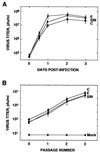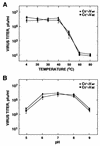Generation of a replication-competent, propagation-deficient virus vector based on the transmissible gastroenteritis coronavirus genome
- PMID: 12388713
- PMCID: PMC136772
- DOI: 10.1128/jvi.76.22.11518-11529.2002
Generation of a replication-competent, propagation-deficient virus vector based on the transmissible gastroenteritis coronavirus genome
Abstract
Replication-competent propagation-deficient virus vectors based on the transmissible gastroenteritis coronavirus (TGEV) genome that are deficient in the essential E gene have been developed by complementation within E(+) packaging cell lines. Cell lines expressing the TGEV E protein were established using the noncytopathic Sindbis virus replicon pSINrep21. In addition, cell lines stably expressing the E gene under the CMV promoter have been developed. The Sindbis replicon vector and the ectopic TGEV E protein did not interfere with the rescue of infectious TGEV from full-length cDNA. Recombinant TGEV deficient in the nonessential 3a and 3b genes and the essential E gene (rTGEV-Delta3abDeltaE) was successfully rescued in these cell lines. rTGEV-Delta3abDeltaE reached high titers (10(7) PFU/ml) in baby hamster kidney cells expressing porcine aminopeptidase N (BHK-pAPN), the cellular receptor for TGEV, using Sindbis replicon and reached titers up to 5 x 10(5) PFU/ml in cells stably expressing E protein under the control of the CMV promoter. The virus titers were proportional to the E protein expression level. The rTGEV-Delta3abDeltaE virions produced in the packaging cell line showed the same morphology and stability under different pHs and temperatures as virus derived from the full-length rTGEV genome, although a delay in virus assembly was observed by electron microscopy and virus titration in the complementation system in relation to the wild-type virus. These viruses were stably grown for >10 passages in the E(+) packaging cell lines. The availability of packaging cell lines will significantly facilitate the production of safe TGEV-derived vectors for vaccination and possibly gene therapy.
Figures









Similar articles
-
Heterologous gene expression from transmissible gastroenteritis virus replicon particles.J Virol. 2002 Feb;76(3):1422-34. doi: 10.1128/jvi.76.3.1422-1434.2002. J Virol. 2002. PMID: 11773416 Free PMC article.
-
Absence of E protein arrests transmissible gastroenteritis coronavirus maturation in the secretory pathway.Virology. 2007 Nov 25;368(2):296-308. doi: 10.1016/j.virol.2007.05.032. Epub 2007 Aug 10. Virology. 2007. PMID: 17692883 Free PMC article.
-
Transmissible gastroenteritis coronavirus gene 7 is not essential but influences in vivo virus replication and virulence.Virology. 2003 Mar 30;308(1):13-22. doi: 10.1016/s0042-6822(02)00096-x. Virology. 2003. PMID: 12706086 Free PMC article.
-
Coronavirus reverse genetics and development of vectors for gene expression.Curr Top Microbiol Immunol. 2005;287:161-97. doi: 10.1007/3-540-26765-4_6. Curr Top Microbiol Immunol. 2005. PMID: 15609512 Free PMC article. Review.
-
Interference with virus and bacteria replication by the tissue specific expression of antibodies and interfering molecules.Adv Exp Med Biol. 1999;473:31-45. doi: 10.1007/978-1-4615-4143-1_3. Adv Exp Med Biol. 1999. PMID: 10659342 Review.
Cited by
-
The coronavirus E protein: assembly and beyond.Viruses. 2012 Mar;4(3):363-82. doi: 10.3390/v4030363. Epub 2012 Mar 8. Viruses. 2012. PMID: 22590676 Free PMC article. Review.
-
PEDV and PDCoV Pathogenesis: The Interplay Between Host Innate Immune Responses and Porcine Enteric Coronaviruses.Front Vet Sci. 2019 Feb 22;6:34. doi: 10.3389/fvets.2019.00034. eCollection 2019. Front Vet Sci. 2019. PMID: 30854373 Free PMC article. Review.
-
Transmissible gastroenteritis virus (TGEV)-based vectors with engineered murine tropism express the rotavirus VP7 protein and immunize mice against rotavirus.Virology. 2011 Feb 5;410(1):107-18. doi: 10.1016/j.virol.2010.10.036. Epub 2010 Nov 21. Virology. 2011. PMID: 21094967 Free PMC article.
-
Coronavirus reverse genetic systems: infectious clones and replicons.Virus Res. 2014 Aug 30;189:262-70. doi: 10.1016/j.virusres.2014.05.026. Epub 2014 Jun 12. Virus Res. 2014. PMID: 24930446 Free PMC article. Review.
-
Role of the coronavirus E viroporin protein transmembrane domain in virus assembly.J Virol. 2007 Apr;81(7):3597-607. doi: 10.1128/JVI.01472-06. Epub 2007 Jan 17. J Virol. 2007. PMID: 17229680 Free PMC article.
References
Publication types
MeSH terms
Substances
LinkOut - more resources
Full Text Sources
Other Literature Sources

